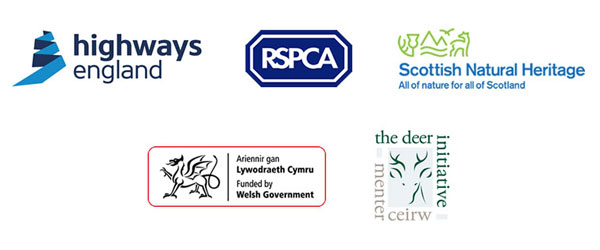
British Deer
The Six Species of British Deer
Buck or Doe, Stag or Hind? Fallow, Roe or Sika? We have a wonderfully diverse wild population of deer in every part of this country. Living wild and unfenced, to these deer, roads are just pathways to cross. Drivers may enjoy seeing deer but on the roads they are a potentially serious hazard. By accurately identifying and reporting deer seen on roads or involved in incidents you may be able to help us to find ways to protect yourselves and the deer.
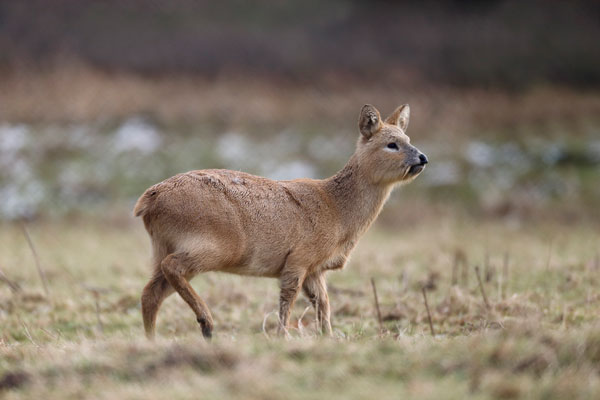
Chinese Water Deer
Chinese Water Deer are a non-native species introduced from Chinese populations along the Yangtze River… more
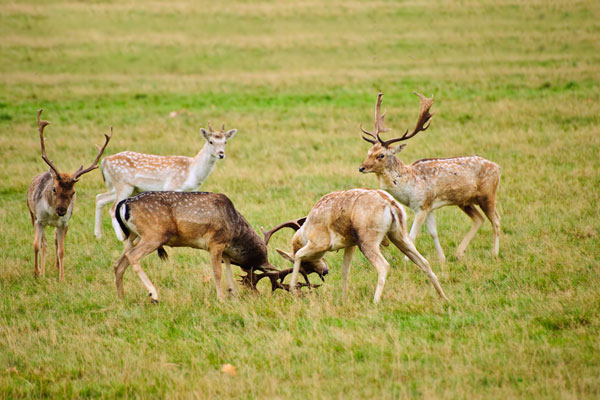
Fallow Deer
Fallow are considered as a naturalised, though re-introduced species. Although fallow deer were present some… more
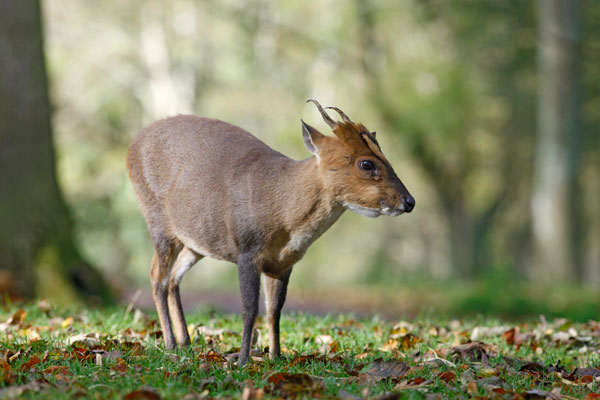
Muntjac
At least seven species of muntjac are known, with a natural distribution from Pakistan to Java and north to mainland China… more
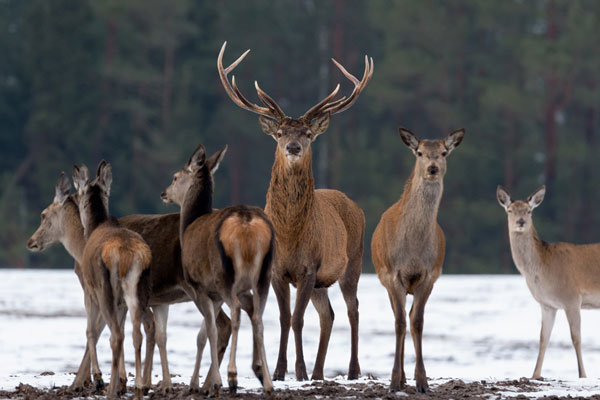
Red Deer
The red deer is Britain’s largest native land mammal (adult stags weigh up to 190 kg and are up to around 140 cm at the shoulder)… more
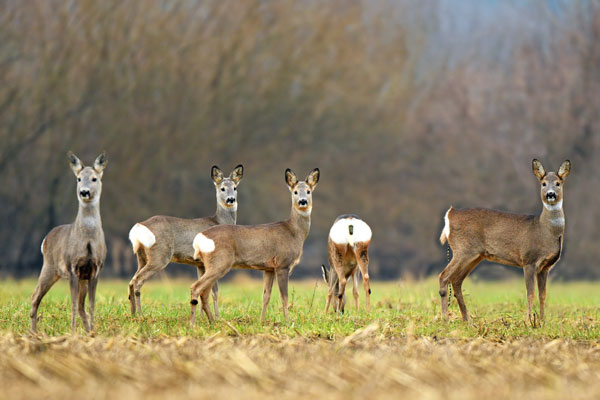
Roe Deer
The roe deer is primarily an animal of mixed and small woodland but is capable of adapting to a wide variety of habitats… more
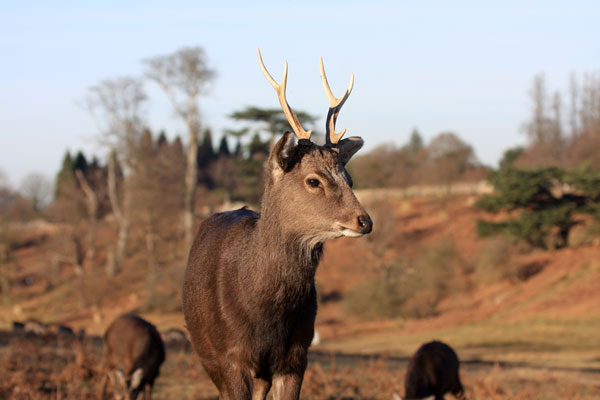
Sika
Sika are a non-native species, originating from the Far East where some 13 different races are recognised… more
Chinese Water Deer
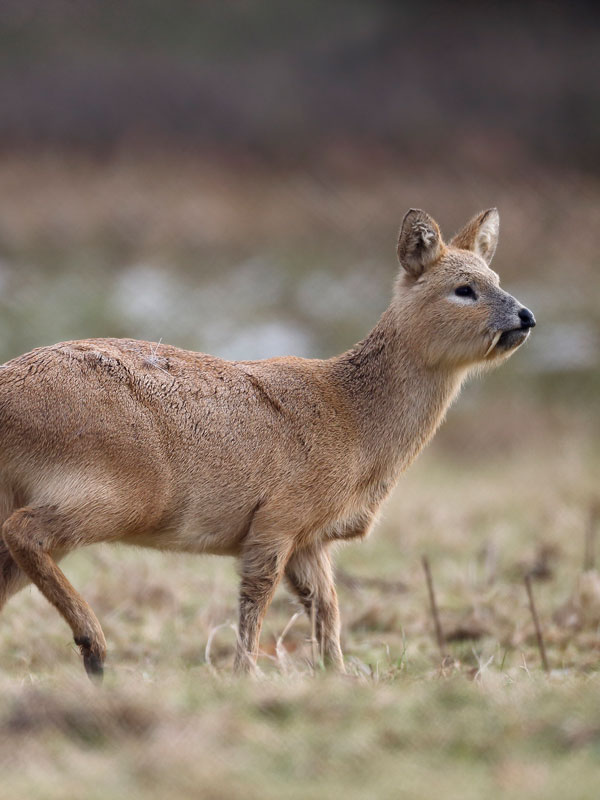
Chinese Water Deer are a non-native species introduced from Chinese populations along the Yangtze River where they are on the IUCN ‘red list’ as a vulnerable species. They are said to be the most primitive living member of the Cervidae family, in part because the buck carries large canine teeth or tusks and has no antlers, characteristics that other deer have evolved beyond. This makes the chinese water deer a biologically important animal.
Chinese water deer are the least common of the UK wild deer species, they are a territorial species and their distribution is largely limited to the Midlands and East Anglia. They have been in the country for longer than muntjac and have a potentially higher birth rate (usually twins or triplets) but although they are increasing in range, they are doing so far more slowly than muntjac.
Preferred habitats are woodlands next to grazing areas and more open and wet areas such as reed beds, boggy areas and river edges. They adapt readily to open areas of grassland such as agricultural fields and parks, and are often be seen out in daylight.
Fallow Deer
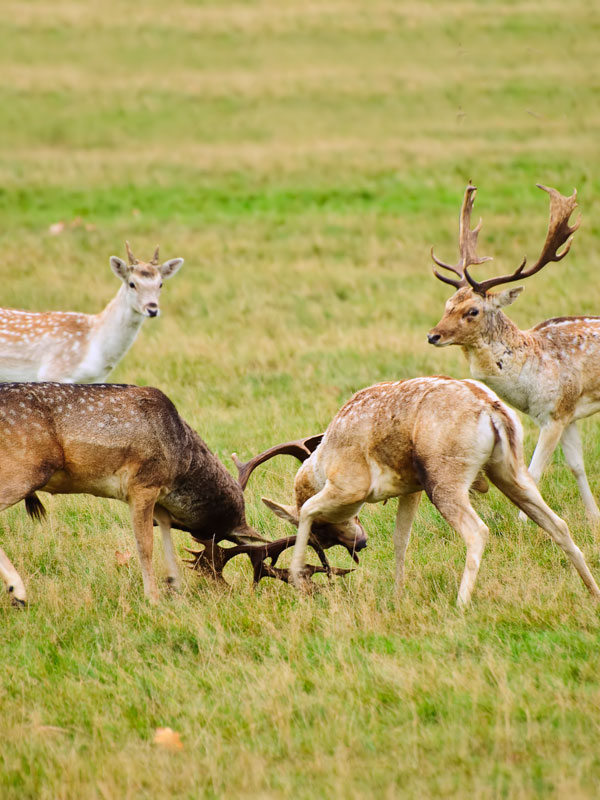
Fallow are considered as a naturalised, though re-introduced species. Although fallow deer were present some 400,000 years ago in Britain, later glaciations restricted them to the Mediterranean basin. There are no reliable records of them being imported alive into Britain before the Norman Conquest, after which they were kept widely in parks for both food and ornament. They were also preserved in the wild for hunting, e.g. in Epping Forest and the New Forest.
The present feral population owes its existence largely to park escapes. Many parks were broken up during the Civil War (1642) and again during the two World Wars. The fallow deer range and numbers have increased substantially since 1972.
Fallow are a herding species and exhibit extreme flexibility in most aspects of their social organisation, group size is influenced by disturbance, habitat, and season. In high-density populations in large woodlands, males live in separate groups to the females and young, except during the autumn rut. In lower-density populations in agricultural areas, however, mixed-sex groups may regularly occur throughout the winter. Fallow have a variety of mating systems ranging from non-territorial defence of harems to the development of clusters of small mating territories or "leks". Fallow generally produce single fawns on an annual basis.
Muntjac
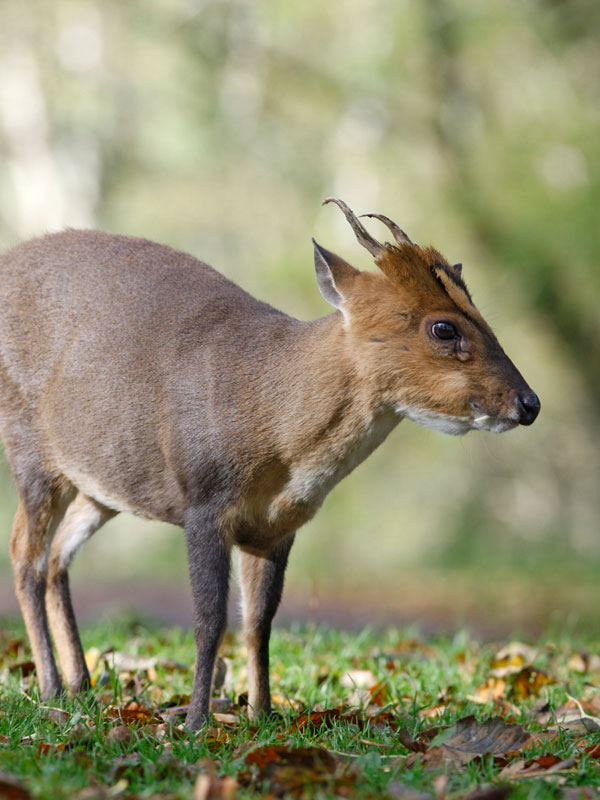
At least seven species of muntjac are known, with a natural distribution from Pakistan to Java and north to mainland China. Two species have been introduced to Britain in the past:
The larger Indian muntjac was brought to Woburn Park in about 1900. After a short time, it was removed from the park but a small population survived in the wild until 1925. The smaller Reeves’ muntjac was introduced before 1900 and flourished, rapidly spreading into surrounding areas. There is no evidence that the Reeves’ hybridised with the Indian species while it was present.
The spread of the Reeves’ muntjac throughout the mainland Britain since 1972 has meant that it is becoming ubiquitous especially in England. Records of small colonies outside the main areas suggest human intervention. The muntjac is regarded as an introduced non-native species and its release into the wild is prohibited under Section 9 of the Wildlife and Countryside Act 1981.
Owing to their subtropical origin, muntjac are not seasonal breeders. They produce single fawns every seven months, gestation is 210 days and lactation is six to eight weeks. Mating follows quickly after parturition.
Muntjac are territorial and the social unit is a family group, with young adults being driven off before the arrival of the next fawn. Males make large scrapes and fray on low branches, mostly using their tusks, rather than their antlers. The tusks are the muntjac’s primary weapons, showing its primitive ancestry. Both sexes bark like a small dog at intruders, often continuing for many minutes.
Red Deer
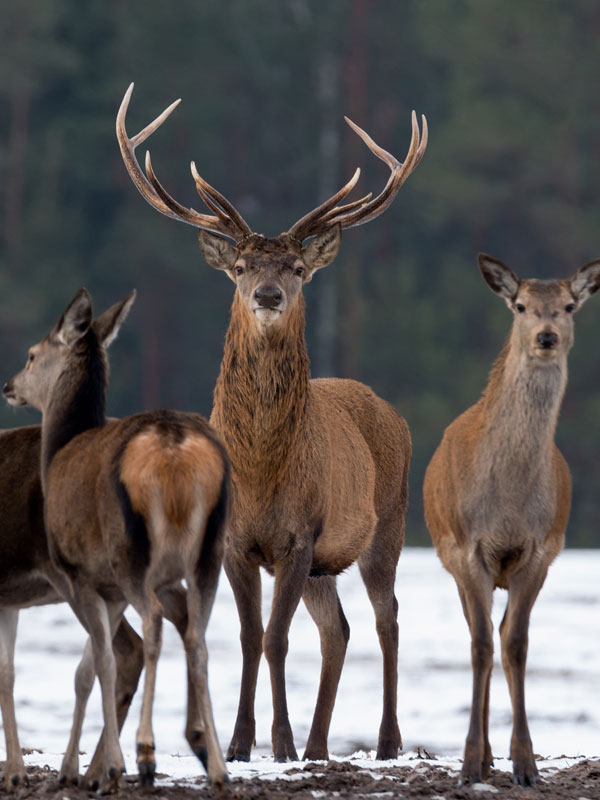
The red deer is Britain’s largest native land mammal (adult stags weigh up to 190 kg and are up to around 140 cm at the shoulder). There have been laws to protect red deer since Saxon times and they have survived in fluctuating numbers through the Middle Ages to modern times.
In England the main concentrations are in south-western England, East Anglia, and the Lake District with a wide scatter of local herds elsewhere. In Wales there are a small number of isolated herds. Some populations, notably those in the west of England, may be considered native, although even these may have had introduction of new blood in the past. Others owe their origins to escapes from parks or to deliberate introductions.
Red deer are animals of woodland associated with open areas. They will sometimes spend their time almost exclusively in the open. They are herding animals which rut in the autumn, usually producing single calves in the spring.
Roe Deer
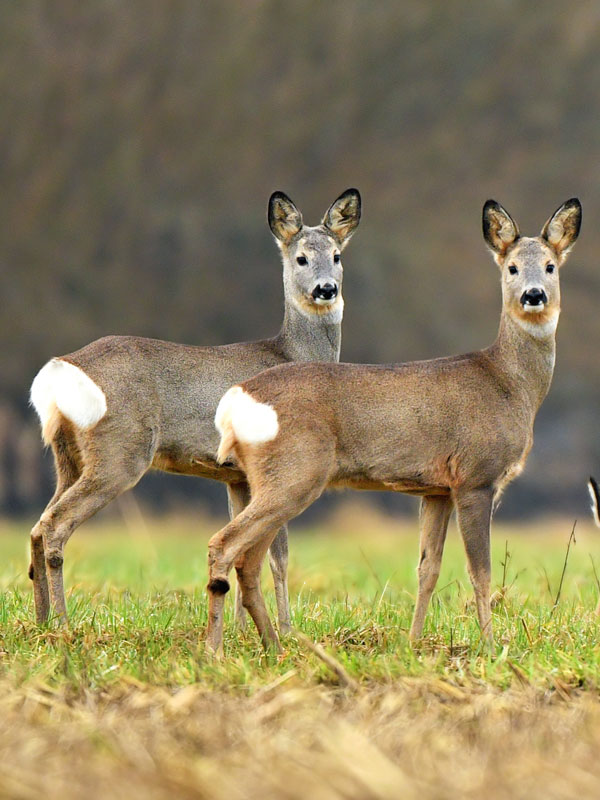
The roe deer is primarily an animal of mixed and small woodland but is capable of adapting to a wide variety of habitats. It has colonised the northern conifer forests and has penetrated many towns, making use of gardens, parks and other open spaces where there is food and cover. It may also be seen well out into open farmland.
The roe deer is a native species which has been present in Britain since at least the Mesolithic period. However, probably because of over-hunting, it became extremely scarce in medieval times and by 1700 was considered extinct in southern and central England and all of Wales. It also disappeared in most regions of Scotland except for the northern Highlands. After 1800 there were re-introductions into England and colonies were established in Dorset, Sussex and East Anglia. At the same time, there was a gradual re-colonisation of most of northern England and Scotland. Today, roe deer occur in most of southern England, all of northern England and Scotland, and they are continuing to spread into the Midlands and Wales.
Sika
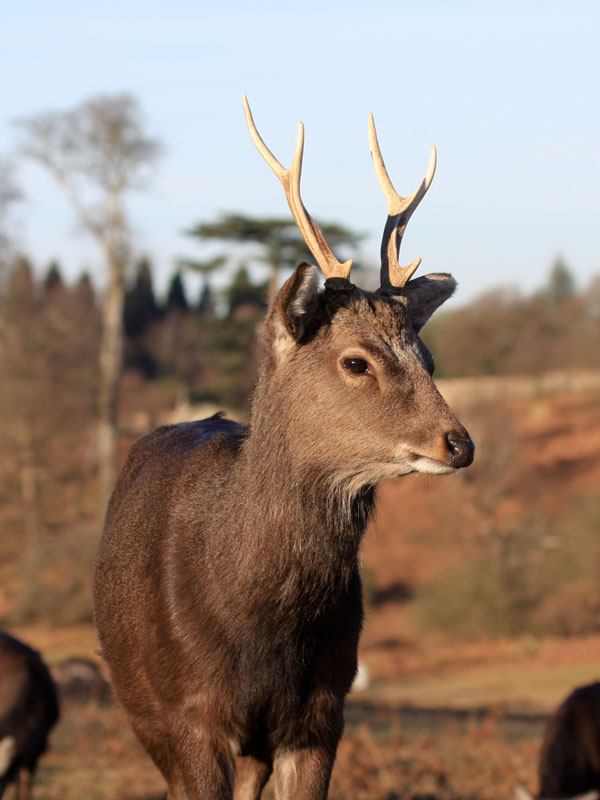
Sika are a non-native species, originating from the Far East where some 13 different races are recognised, many of them endangered in their native countries.
Most sika in Britain are Japanese in origin and were brought first to Ireland in about 1860, to Powerscourt, and thence to a variety of places in England and Scotland. Some were released deliberately, e.g. in Kintyre, the New Forest, Dorset and Bowland Forest. The deer at Bowland are thought to have been Manchurian sika. Others escaped from parks, especially during the two World Wars, and established feral populations.
In recent decades’ sika have significantly extended their range. In England sika are to be found in Lancashire and Yorkshire, southern and mid Dorset and the New Forest. In addition, small local populations exist in the vicinity of several of the parks from which they originally escaped.
Sika prefer woodland or thicket and graze on nearby open areas such as farmland or heath/moorland. They are herding animals which rut in the autumn, usually producing single calves in the spring.

